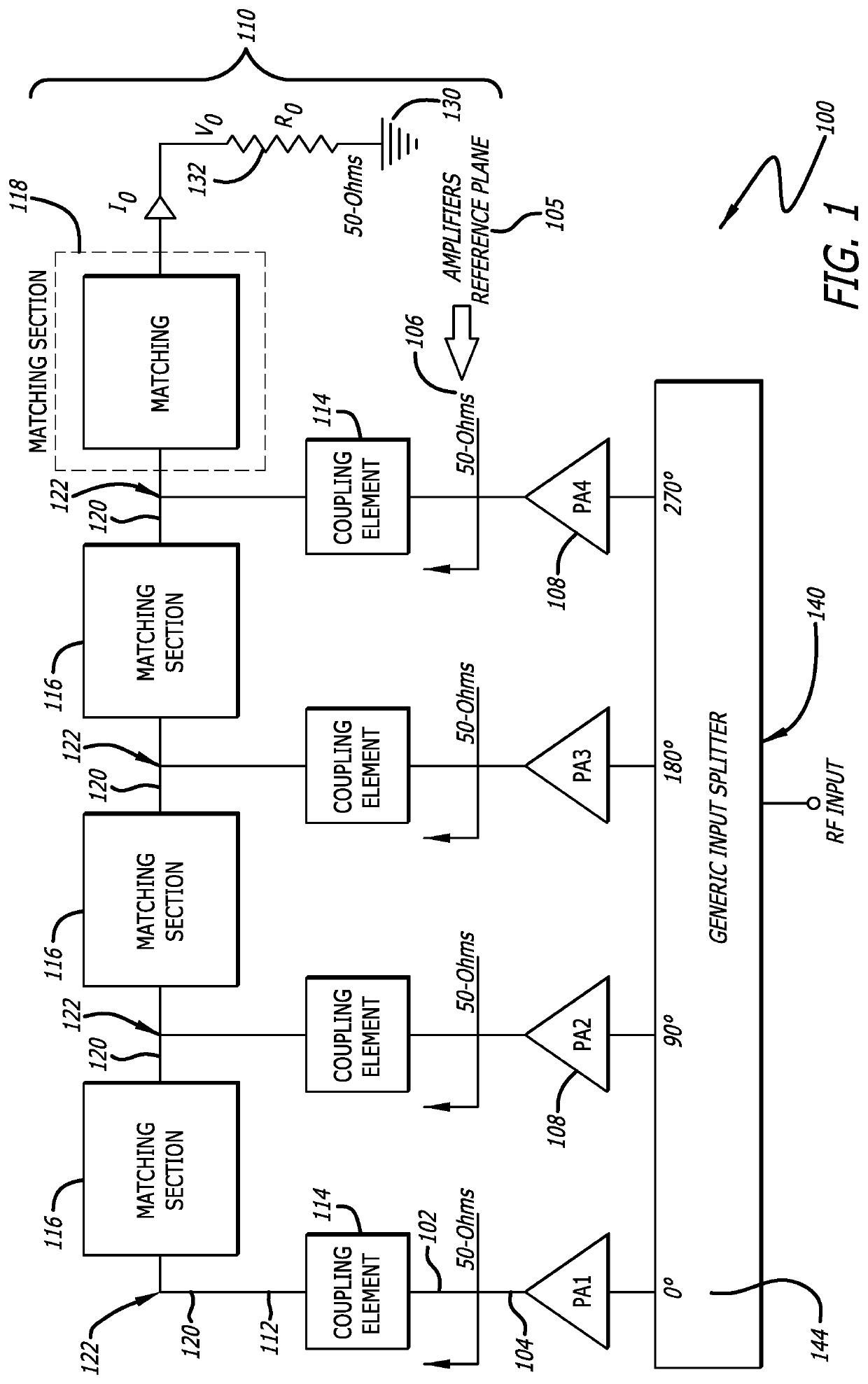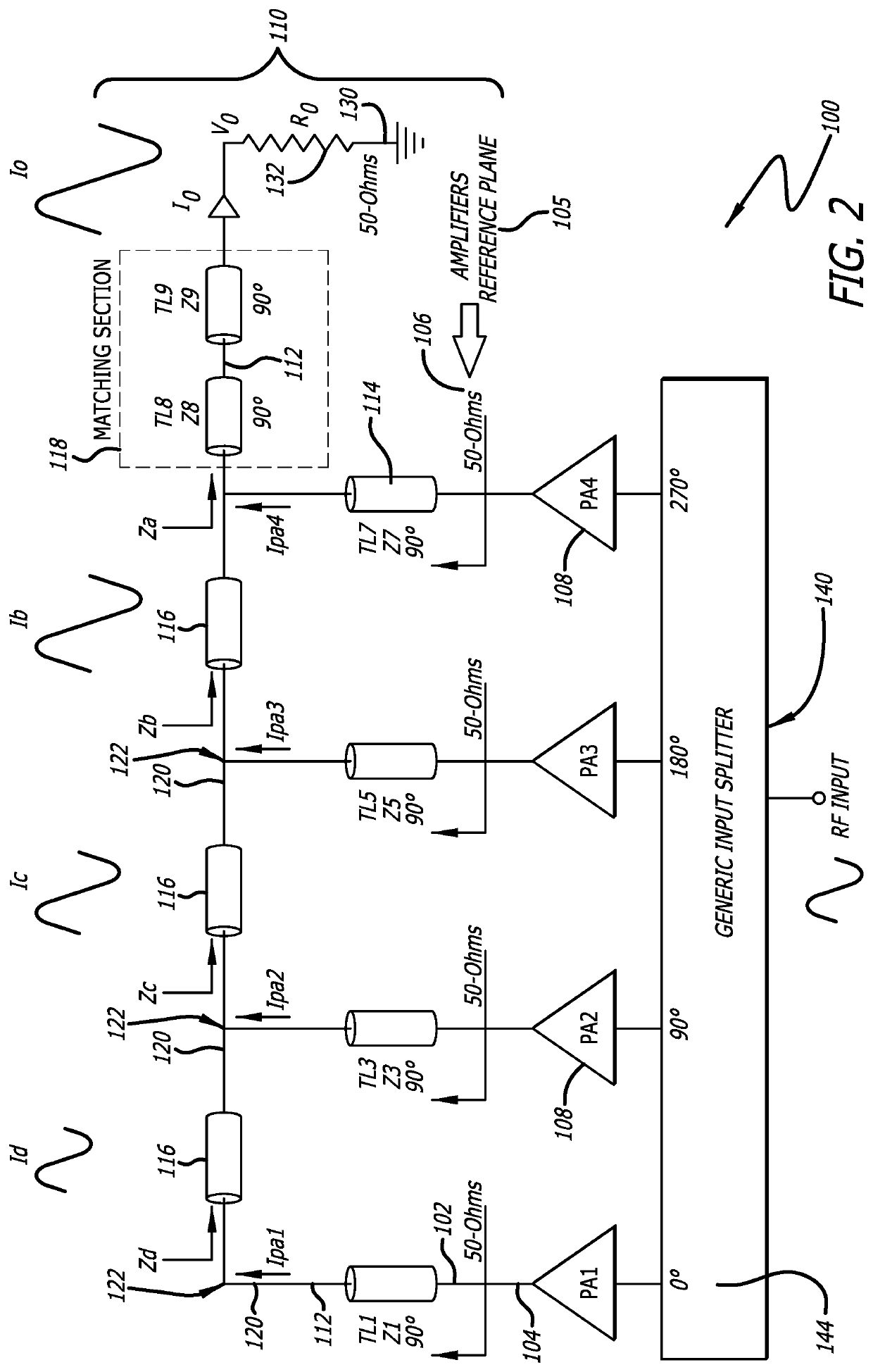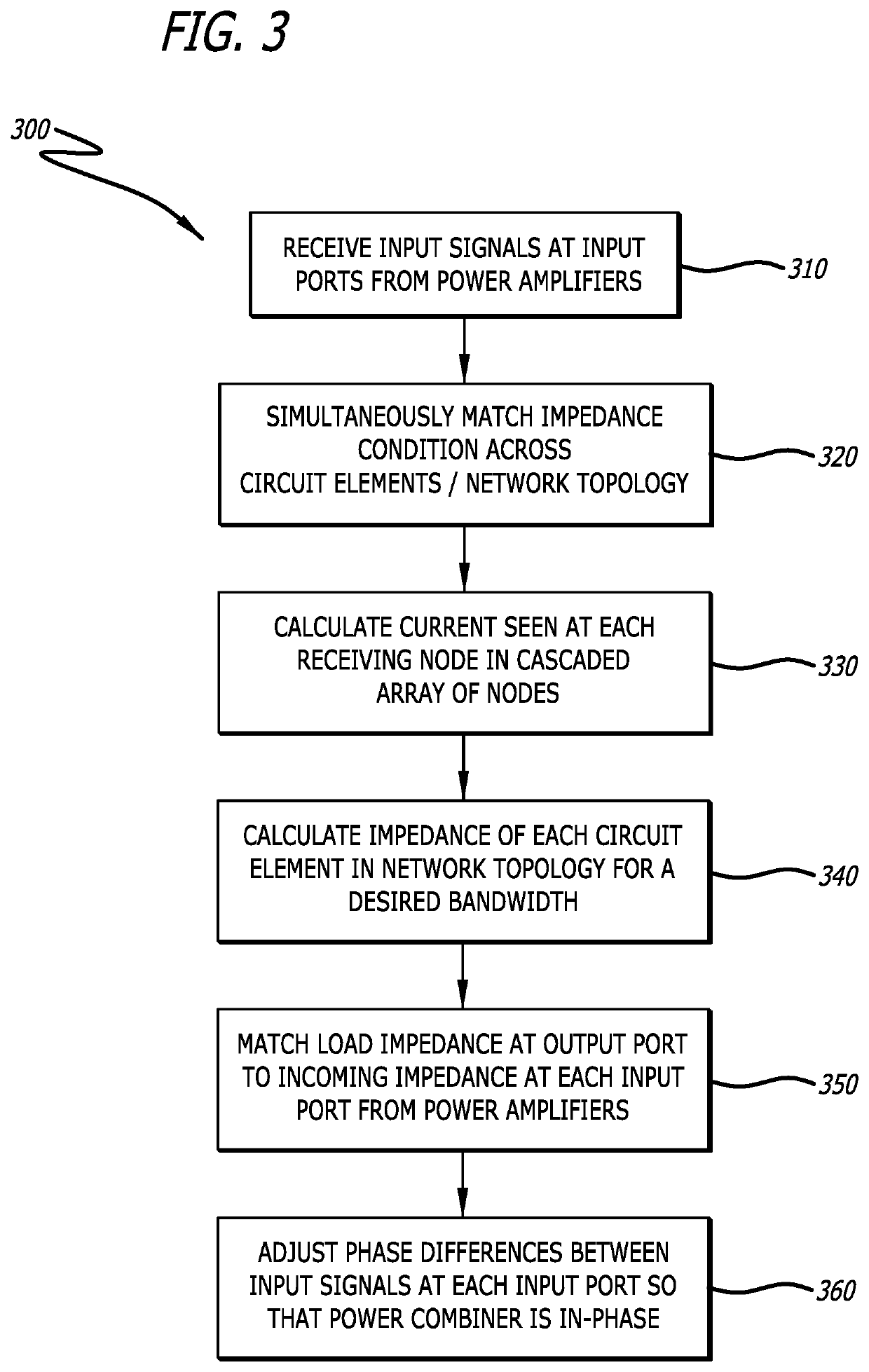Microwave and radio frequency (RF) power electronics system having power combiner circuit
a technology of power electronics and combiner circuit, which is applied in the field of radio frequency and microwave power electronics systems, can solve the problems of increasing bandwidth, substantial power output dissipation between input and output ports, and not being suitable for many uses, so as to improve frequency response, reduce insertion loss, and reduce insertion loss
- Summary
- Abstract
- Description
- Claims
- Application Information
AI Technical Summary
Benefits of technology
Problems solved by technology
Method used
Image
Examples
Embodiment Construction
[0025]In the following description of the present invention reference is made to the exemplary embodiments illustrating the principles of the present invention and how it is practiced. Other embodiments will be utilized to practice the present invention and structural and functional changes will be made thereto without departing from the scope of the present invention.
[0026]FIG. 1 is a circuit diagram of a power combiner circuit 100 according to the present invention, for power applications in radio frequency and microwave circuit design. In the power combiner circuit 100 described herein, input signals 104 are combined in an impedance matching network topology 110 that ensures that a load impedance 132 seen at an output port 130 is the same as the impedances 106 seen by each incoming input signal 104 at each input port 102. The power combiner circuit 100 includes several components that introduce a characteristic impedance in transmission lines 112, each of which contribute to enab...
PUM
 Login to View More
Login to View More Abstract
Description
Claims
Application Information
 Login to View More
Login to View More - R&D
- Intellectual Property
- Life Sciences
- Materials
- Tech Scout
- Unparalleled Data Quality
- Higher Quality Content
- 60% Fewer Hallucinations
Browse by: Latest US Patents, China's latest patents, Technical Efficacy Thesaurus, Application Domain, Technology Topic, Popular Technical Reports.
© 2025 PatSnap. All rights reserved.Legal|Privacy policy|Modern Slavery Act Transparency Statement|Sitemap|About US| Contact US: help@patsnap.com



